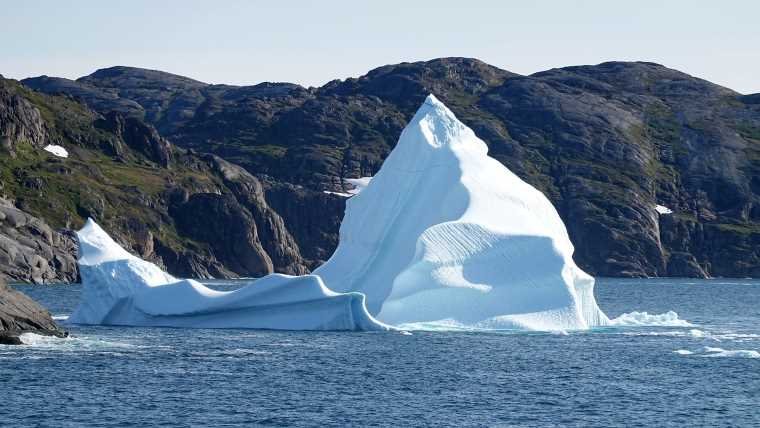University of Leeds scientists studying the melting ice sheets and glaciers of Greenland say the land revealed by the thaw is slowly filling up with plant life, turning the previous white landscape to green.
Over the last 30 years, an estimated 11,000 square miles or 28,707 square kilometers that was once covered in snow and ice is now barren rock, wetlands, and shrubs.
“The total area of ice loss is equivalent to the size of Albania,” explains a press release announcing the stunning findings, “and represents about 1.6 % of Greenland’s total ice and glacier cover.”
Warmer Temperatures Causing the ‘Greening’ of Greenland
At roughly 836,330 square miles in size (2.1 million square km), Greenland is considered the world’s largest island. Part of the Arctic Region, the country is home to just a shade under 57,000 people. For reference, that is about half the population of Springfield, Illinois. The disparity between the land mass and population size is mostly due to the fact that the majority of Greenland is buried under snow, ice, and permafrost.
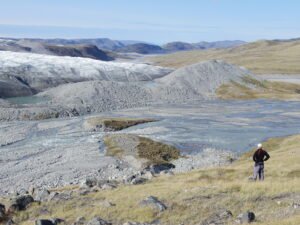

Although the levels of ice covering Greenland can fluctuate over time, the researchers behind this latest study say the changes in the last few decades are markedly different from some glacial retreats of the past. The main culprit is likely climate change.
“Warmer temperatures are linked to the land cover changes that we are seeing on Greenland,” said Jonathan Carrivick, an Earth scientist based in the Faculty of Environment at Leeds and one of the authors of the published study. “By analysing high-resolution satellite images, we have been able to produce a detailed record of the land cover changes that are taking place.”
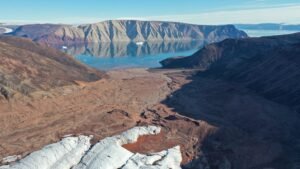

Among the significant changes the team has witnessed over the decades is the retreating ice cover. Perhaps even more surprising is the fact that the barren rock revealed by this melting is slowly but surely turning green with plant life.
Based on the team’s calculations, roughly 33,774 sq. miles (87,475 sq. km) of land previously covered in ice is now covered in some form of plant life. Notably, that figure has more than doubled during the past three decades. It’s a trend the researchers say will likely continue.
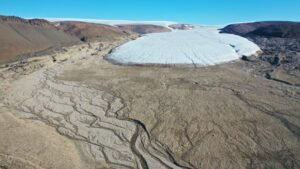

“We have seen signs that the loss of ice is triggering other reactions which will result in further loss of ice and further ‘greening’ of Greenland, where shrinking ice exposes bare rock that is then colonised by tundra and eventually shrub,” said Carrvick. “At the same time, water released from the melting ice is moving sediment and silt, and that eventually forms wetlands and fenlands.”
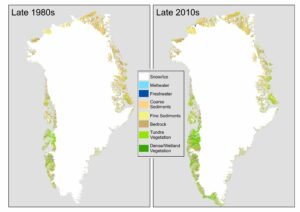

Is This a Good Thing or a Bad Thing?
At first glance, the idea of replacing ice-covered land with green vegetation that can suck up more carbon dioxide sounds like a good thing. Plus, adding more area of livable land is undoubtedly a boon for such an underpopulated nation. Unfortunately, the researchers say that the negatives are likely going to outweigh the positives.
Since Greenland’s ice reflects sunlight better than the black rock underneath, more energy is absorbed by the newly exposed land, which adds to an increasing global temperature. Similarly, water absorbs more heat than ice, so the melted ice that has turned to water also adds to the absorption of solar energy.
Even the added plant growth on the parts of the rock that have transitioned from tundra to shrubbery emit more methane than they absorb carbon dioxide. This means the new wetlands and shrubs add to greenhouse gas totals.
“Expansion of vegetation and especially in wetland areas indicates but also exacerbates permafrost thaw, active layer thickening and thus emissions of greenhouse gases previously stored in these Arctic soils,” the research team explains.
Like many of the effects caused by an increase in worldwide temperatures, the methodical greening of Greenland is only expected to increase. Given the changes the researchers have already witnessed, they say that the worst is yet to come.
“The expansion of vegetation, occurring in tandem with the retreat of glaciers and the ice sheet, is significantly altering the flow of sediments and nutrients into coastal waters,” said Dr. Michael Grimes, the lead author of the report who conducted the research as part of their Ph.D. “These changes are critical, particularly for the indigenous populations whose traditional subsistence hunting practices rely on the stability of these delicate ecosystems. Moreover, the loss of ice mass in Greenland is a substantial contributor to global sea level rise, a trend that poses significant challenges both now and in the future.”
Christopher Plain is a Science Fiction and Fantasy novelist and Head Science Writer at The Debrief. Follow and connect with him on X, learn about his books at plainfiction.com, or email him directly at christopher@thedebrief.org.
